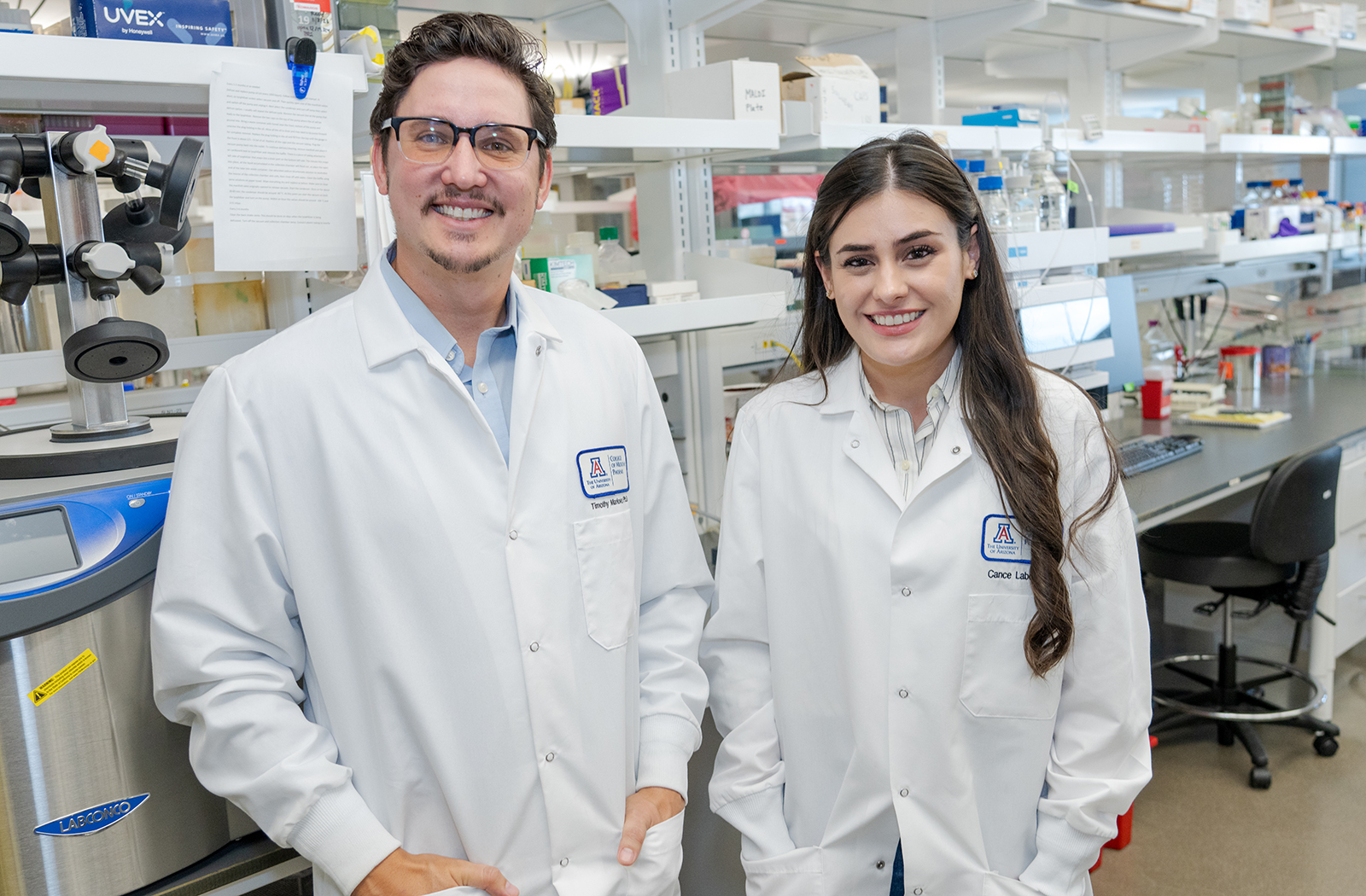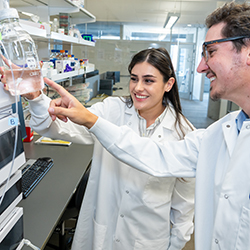
First-of-Its-Kind Cancer Therapy Targets ‘Undruggable’ Protein Interaction

A groundbreaking cancer therapy being developed in Phoenix is rewriting the rules of drug discovery by targeting what scientists have long considered “undruggable”— a critical interaction between two proteins that drive tumor growth and spreading.
In findings recently published in Nature Communications, researchers at the University of Arizona College of Medicine – Phoenix and Arizona State University are leading the effort with a new therapy that disrupts the connection between two key proteins: focal adhesion kinase (FAK) and paxillin. These proteins help cancer cells survive and grow. The project, led by Timothy Marlowe, PhD — assistant professor in the Department of Internal Medicine, the UA Cancer Center and the College of Pharmacy — could open the door to new treatments for cancers that don’t respond to current therapies.
“FAK is overexpressed in over 70% of solid tumors, but most drugs have only targeted its enzyme function,” said Dr. Marlowe. “We’re taking a different approach — focusing on how it physically connects to paxillin, which plays a major role in cancer spreading. That connection has never been successfully targeted before.”

Rather than blocking FAK’s enzyme activity, the team zeroed in on the area that physically anchors the cell to the extracellular matrix — called the FAT domain. By breaking that link, they aim to shut down the chain of signals that helps tumors grow and invade other tissues. “By interfering with this interaction, we’re not just slowing cancer — we’re breaking down the central hub that keeps cancer cells alive and aggressive,” said Lauren Reyes, a PhD student and collaborator on the research.
The breakthrough came with the creation of a special molecule called a stapled peptide inhibitor. This lab-designed molecule mimics part of the paxillin protein but is modified with a “staple” that holds its shape, making it bind to FAK about 100 times more strongly than the natural version.
“Adding the staple in a precise position turned a weak binder into a strong, stable one,” Dr. Marlowe explained. “We even confirmed its shape and interaction using X-ray crystallography.”
To help the molecule reach its target inside cancer cells, the team developed a final version called 2012 that includes a small fatty acid (myristoylation) to help it cross cell membranes. In early lab tests, this version successfully entered cancer cells, disrupted their structure, triggered cell death and significantly slowed tumor growth in preclinical models.
For decades, protein-protein interactions like FAK-paxillin were considered too complex to target with typical drugs. This new research challenges that belief.
“We’re showing that with smart design and a deep understanding of protein structure, we can target what was once undruggable,” Dr. Marlowe said. “And this isn’t just about FAK — this approach could be used to develop entirely new types of therapies.”
Next, the team is moving toward clinical development. “We’re scaling up production under GMP standards and preparing for safety studies,” said Dr. Marlowe. “We’re also identifying which patients could benefit the most — especially those with cancers like melanoma and pancreatic cancer, where FAK is especially active.”
There’s also potential for this therapy to work in combination with existing cancer treatments. “We’re particularly excited about combining it with immunotherapies,” Dr. Marlowe added.
“There’s still a long road ahead,” Reyes said, “but we’re making real progress. With ongoing studies using patient-derived cancer models, we’re getting closer to turning this lab discovery into a real treatment.”
With more than 2 million new cases of invasive cancer expected to be diagnosed in the United States in 2025, according to the American Cancer Society, the need for better therapies such as this are paramount.
This research was conducted in collaboration with Petra Fromme, PhD, of Arizona State University. Learn more about her lab.
If you’re interested in supporting melanoma research, please contact Julie Bowe.
This research was supported by the National Cancer Institute under project numbers R37CA065910 and R42CA240124.
The content is solely the responsibility of the authors and does not necessarily represent the official views of the National Cancer Institute.
About the College
Founded in 2007, the University of Arizona College of Medicine – Phoenix inspires and trains exemplary physicians, scientists and leaders to advance its core missions in education, research, clinical care and service to communities across Arizona. The college’s strength lies in our collaborations and partnerships with clinical affiliates, community organizations and industry sponsors. With our primary affiliate, Banner Health, we are recognized as the premier academic medical center in Phoenix. As an anchor institution of the Phoenix Bioscience Core, the college is home to signature research programs in neurosciences, cardiopulmonary diseases, immunology, informatics and metabolism. These focus areas uniquely position us to drive biomedical research and bolster economic development in the region.
As an urban institution with strong roots in rural and tribal health, the college has graduated more than 1,000 physicians and matriculates 130 students each year. Greater than 60% of matriculating students are from Arizona and many continue training at our GME sponsored residency programs, ultimately pursuing local academic and community-based opportunities. While our traditional four-year program continues to thrive, we will launch our recently approved accelerated three-year medical student curriculum with exclusive focus on primary care. This program is designed to further enhance workforce retention needs across Arizona.
The college has embarked on our strategic plan for 2025 to 2030. Learn more.